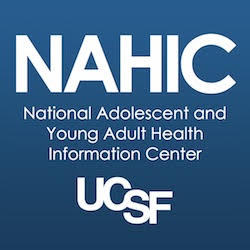Access to confidential care is essential for adolescents and young adults, especially for those seeking sensitive services (e.g., mental health or sexual health).
When adolescents and young adults are assured of confidentiality, they are more likely to
- seek health services,
- disclose risky behaviors to providers, and
- return for follow-up care.1
In fact, major medical organizations, including the American Medical Association and the American Academy of Pediatrics support the provision of confidential health services for adolescents. However, few teens report spending time alone with their clinician, when confidential disclosures could occur.2,3
An emerging challenge of confidentiality comes from efforts to improve transparency and accountability for health care consumers, such as “Explanation of Benefits” (EOBs). Confidentiality is increasingly an issue for young adults, as many gain coverage as dependents on their parents’ insurance plans.
The Center partners have created several resources on confidentiality. Here is a starter set of resources. Check back soon for more!
Background Information:
In 2015, NAHIC’s Dr. Claire Brindis presented at a CDC Grand Round session on adolescent health, including the importance of minor consent laws and confidentiality for sensitive services (e.g., sexual and reproductive health services).
This 2014 report highlights key issues with Explanation of Benefits (EOBs) and sensitive health services, and discusses how these issues are impacted by the ACA.
UCSF researchers examined rates of past-year adolescent time alone with a clinician among youth with a preventive visit using a national data set. We found low rates overall, plus disparities in “time alone” by age, gender, and race/ethnicity. Click here to view the article’s abstract and stay tuned as we are updating this study.
State Action:
This brief reports on some of the legal gaps that led to new legislation and privacy rights for patients in California; in addition to findings from an exploratory study of health plans and insurers, and their readiness to fulfill the requirements of SB 138, the Confidential Health Information Act.
This 2012 brief examined the extent to which planning efforts in New York State considered and responded to the critical health care needs of adolescents and young adults– such as maintaining confidentiality– as the state actively pursued implementation of the ACA.
References:
- Ford C., English A., & Sigman G. Confidential Health Care for Adolescents: Position Paper for the Society for Adolescent Medicine. J of Adolesc Health 2004; 35(2):160–167. doi:10.1016/j.jadohealth.2004.03.002.
- Irwin Jr C.E., Adams S.H., Park M.J., & Newacheck P.W. Preventive Care for Adolescents: Few Get Visits and Fewer Get Services. Pediatrics 2009; 123:e565–572. doi: 10.1542/peds.2008-2601.
- Edman J.C., Adams S.H., Park M.J., & Irwin Jr C.E. Who Gets Confidential Care? Disparities in a National Sample of Adolescents. J Adolesc Health 2010; 46:393–395. doi: 10.1016/j.jadohealth.2009.09.003.
 University of California San Francisco
University of California San Francisco



